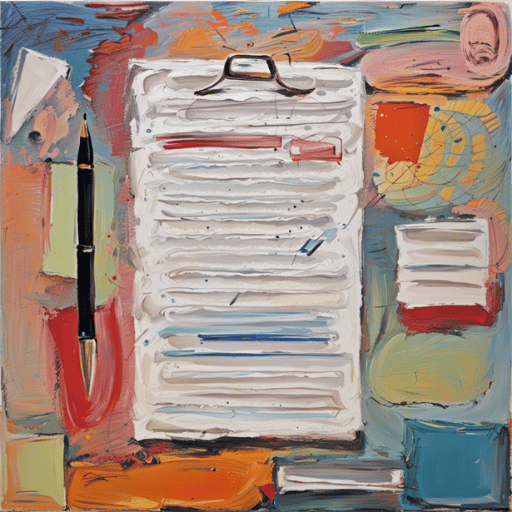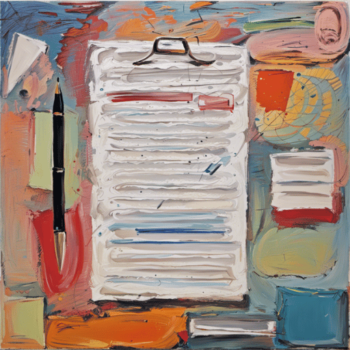Music Copyist SOPs
Creating Standard Operating Procedures for your Music Copyist work can be difficult and take time. That’s why we’ve created these example Music Copyist SOPs so you can jumpstart your SOP creation process. We want to help you set up your Arts systems and processes by taking these sample SOPs and building out your own SOPs template library. By having all your Arts procedures in one place, your team will have the information they need at all times. Let’s look at some Music Copyist SOP examples.
Music Copyist SOP Examples
1. SOP: Music Preparation
Purpose: This SOP outlines the process of preparing music scores for various purposes, such as performances, recordings, or publishing. It includes tasks like transcribing, notating, and formatting the music according to industry standards. The goal is to ensure accurate and legible music scores for musicians and clients.
Scope: This SOP covers the entire music preparation process, from receiving the original music to delivering the final scores. It may involve collaboration with composers, arrangers, and music directors.
Person Responsible: The music copyist is responsible for executing this SOP, ensuring the accuracy and quality of the prepared music scores.
References: This SOP may reference other SOPs related to music notation software usage, proofreading, and quality control.
2. SOP: Score Editing and Proofreading
Purpose: This SOP outlines the procedures for editing and proofreading music scores to ensure accuracy, consistency, and adherence to musical conventions. It involves checking for errors, correcting notation, and verifying the overall quality of the scores.
Scope: This SOP covers the editing and proofreading process for music scores, including checking for correct pitches, rhythms, dynamics, articulations, and other musical elements. It may also involve verifying the accuracy of lyrics, chord symbols, and other notations.
Person Responsible: The music copyist or a designated editor is responsible for performing the editing and proofreading tasks outlined in this SOP.
References: This SOP may reference the Music Preparation SOP for guidelines on formatting and notation standards, as well as any SOPs related to specific editing software or tools.
3. SOP: Parts Extraction and Formatting
Purpose: This SOP details the process of extracting individual instrumental or vocal parts from a full score and formatting them for ease of use by performers. It ensures that each part is clear, well-organized, and contains all necessary information for musicians to perform their respective parts accurately.
Scope: This SOP covers the extraction and formatting of individual parts from a full score, including assigning appropriate page breaks, rehearsal marks, measure numbers, and instrument-specific notations. It may also involve transposing parts for different instruments.
Person Responsible: The music copyist is responsible for extracting and formatting the individual parts according to this SOP.
References: This SOP may reference the Music Preparation SOP for guidelines on formatting and notation standards, as well as any SOPs related to specific part extraction software or tools.
4. SOP: Score and Part Archiving
Purpose: This SOP outlines the procedures for organizing, cataloging, and archiving music scores and parts to ensure easy retrieval and long-term preservation. It includes creating a comprehensive database, labeling physical copies, and implementing a systematic filing system.
Scope: This SOP covers the archiving process for both physical and digital music scores and parts. It may involve creating a cataloging system, assigning unique identifiers, and implementing backup and storage protocols.
Person Responsible: The music copyist or a designated archivist is responsible for implementing this SOP and maintaining an organized and accessible music archive.
References: This SOP may reference any SOPs related to digital file management, database creation, or physical document preservation.
5. SOP: Communication and Collaboration
Purpose: This SOP outlines the procedures for effective communication and collaboration with clients, composers, arrangers, and other stakeholders involved in the music copyist’s work. It ensures clear and timely exchange of information, feedback, and revisions.
Scope: This SOP covers all aspects of communication and collaboration, including initial project discussions, feedback loops, revision requests, and final delivery of the music scores. It may involve using various communication channels, such as email, phone calls, or project management software.
Person Responsible: The music copyist is responsible for maintaining effective communication and collaboration throughout the music preparation process, as outlined in this SOP.
References: This SOP may reference any SOPs related to project management, client communication, or collaboration tools used in the industry
Music Copyist SOP Templates
Looking for SOP templates for your Music Copyist work? We’ve got you covered. You can build out your company SOPs using the sample SOP information above (added to our template) or our team can put together a starter SOPs template based on your Music Copyist work. Get in touch if you’ve got questions about the quickest way to build out your Arts SOPs library.









